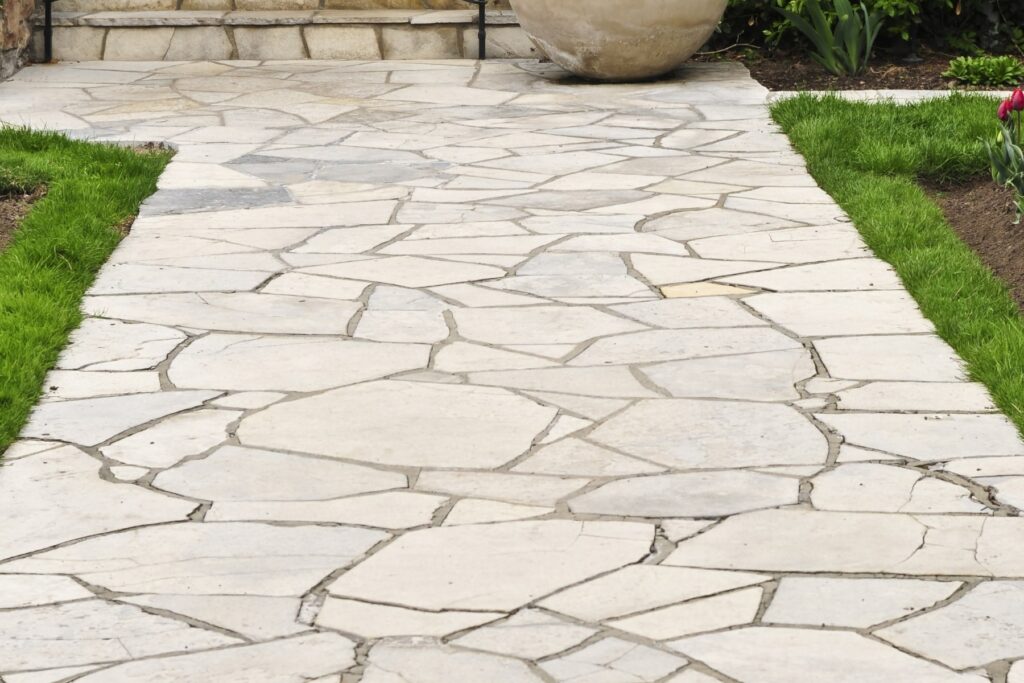BRICK SIDEWALK NEW HAVEN CT
Thinking about upgrading your walkway? A brick sidewalk might be just what your New Haven home or business needs. Brick has a timeless charm that never goes out of style—it’s been used for centuries and still looks amazing today. Whether you’re aiming for a historic look or something clean and modern, brick fits right in. It’s not just about looks either—brick is tough, weather-resistant, and adds serious curb appeal. Plus, it works beautifully in both residential yards and commercial entryways, giving your property that polished, welcoming feel.
Get in touch with our brick sidewalk New Haven, Connecticut team.
Get A Free Estimate
POPULAR BRICK STYLES & PATTERNS
Herringbone
Herringbone features bricks laid in a V-shaped zigzag, creating a strong and stylish look. It’s perfect for high-traffic areas like front walkways because it’s both eye-catching and durable.
Running Bond
Running bond is the most traditional layout, with each brick offset from the one below. It offers a clean, classic look that works well for long, straight paths and simple designs.
Basket Weave
Basket weave alternates pairs of bricks horizontally and vertically to mimic a woven pattern. This design adds charm and vintage appeal, making it great for cottage-style homes or garden paths.
TRADITIONAL RED BRICK VS. MODERN COLOUR OPTIONS
Traditional red brick offers that classic, timeless look that works beautifully with older homes and historic neighborhoods. If you’re after something more contemporary, modern colour options like charcoal, tan, or even blended tones can give your walkway a fresh, updated feel. It all depends on the vibe you want for your space.


PATTERN OPTIONS: HERRINGBONE, RUNNING BOND, BASKET WEAVE, AND MORE
The key to a great-looking brick sidewalk is making sure it complements your home. Choose colours and patterns that work with your siding, trim, and existing landscaping. For traditional homes, red or brown bricks work well, while sleek, darker tones suit more modern styles. It’s all about creating a seamless flow from your sidewalk to your front door.
BRICK INSTALLATION PROCESS
- BASE LAYER & DRAINAGE SETUP
Before any bricks go down, we start by clearing and excavating the area to the proper depth. A compacted gravel base is laid first to create a solid, stable foundation. On top of that, a layer of sand is added to help with leveling and flexibility. Proper drainage is key, so we slope the base slightly to ensure water flows away from your home or building. This prevents pooling and keeps your walkway strong for years to come.
- BRICK LAYING
Once the base is ready, we begin laying the bricks in your chosen pattern—whether it’s herringbone, running bond, or basket weave. Each brick is carefully positioned for a tight, consistent fit. We use spacers or string lines to keep the layout straight and even. During this step, minor adjustments are made to ensure everything stays level. It’s a meticulous process, but it’s what gives your sidewalk that polished, professional look.
- SECURING JOINTS
After the bricks are in place, we fill the joints with either polymeric sand or mortar, depending on the style and durability needs. Sand is swept into the gaps and compacted to lock the bricks in place while allowing for flexibility. Mortar provides a more rigid, permanent bond if you’re going for a solid, classic finish. Once the joints are filled, the surface is cleaned to remove excess material. This step adds stability and prevents weeds from growing between the bricks.
BRICK SIDEWALKS MAINTENANCE TIPS
How to keep your brick sidewalk clean and weed-free
Keeping your brick sidewalk looking great starts with regular sweeping to remove leaves, dirt, and debris. This prevents stains and helps you spot any early signs of weeds or moss. If weeds do pop up between bricks, pull them out or use a gentle weed killer. A quick rinse with a garden hose now and then will keep the surface fresh. For a deeper clean, a mild detergent and soft scrub brush can tackle stains without damaging the bricks.
When to reseal or re-sand
Over time, the sand or sealant between your bricks can wear down, especially in high-traffic areas. It’s a good idea to re-sand or reseal every 2–3 years to keep the joints tight and protected. Polymeric sand helps prevent weeds and insects from creeping in. If you’ve sealed your bricks, a fresh coat will protect them from moisture, stains, and fading. Keeping up with this simple maintenance extends the life and beauty of your walkway.
Seasonal care for freeze-thaw cycles in colder climates
In places like New Haven, the freeze-thaw cycle can be tough on outdoor surfaces. To protect your brick sidewalk in winter, avoid using salt—it can damage the bricks and mortar. Instead, use sand or a pet-safe deicer for traction. Clear snow promptly with a plastic shovel to avoid scratching or loosening bricks. Come spring, check for any heaving or shifting and make small repairs before it becomes a bigger issue.
FREQUENTLY ASKED QUESTIONS
How long does installation take?
Brick sidewalk installation usually takes between 2 to 5 days, depending on the size and complexity of the project. Smaller paths can often be finished in a couple of days, while larger or more intricate designs take a bit longer. Weather and site conditions can also affect the timeline. We always aim to stick to a clear schedule and keep you updated along the way. Our goal is to make the process smooth and hassle-free from start to finish.
Are brick sidewalks suitable for all weather?
Yes, brick sidewalks are great for all kinds of weather, especially when installed properly. They hold up well in rain, snow, and sun, and their textured surface provides good traction year-round. In colder climates like New Haven, bricks can handle freeze-thaw cycles better than some other materials. Just be sure they’re installed with proper drainage and base prep. With a little seasonal care, they’ll look great and stay strong for years.
Can bricks be repaired or replaced individually?
Absolutely—one of the best things about brick sidewalks is how easy they are to fix. If a brick cracks or shifts, it can usually be removed and replaced without disturbing the whole walkway. This makes repairs quick, affordable, and minimally invasive. It’s a smart choice for long-term maintenance. Plus, we always try to match replacement bricks so your walkway stays seamless.
Do I need a permit for a sidewalk?
In New Haven, you might need a permit depending on where and how your sidewalk is being built. If it connects to public property, like a city sidewalk or curb, a permit is usually required. For sidewalks on private land, it’s often more flexible—but it’s always good to check. We can help guide you through the process and even assist with the paperwork. Making sure everything’s up to code means no surprises down the line.

